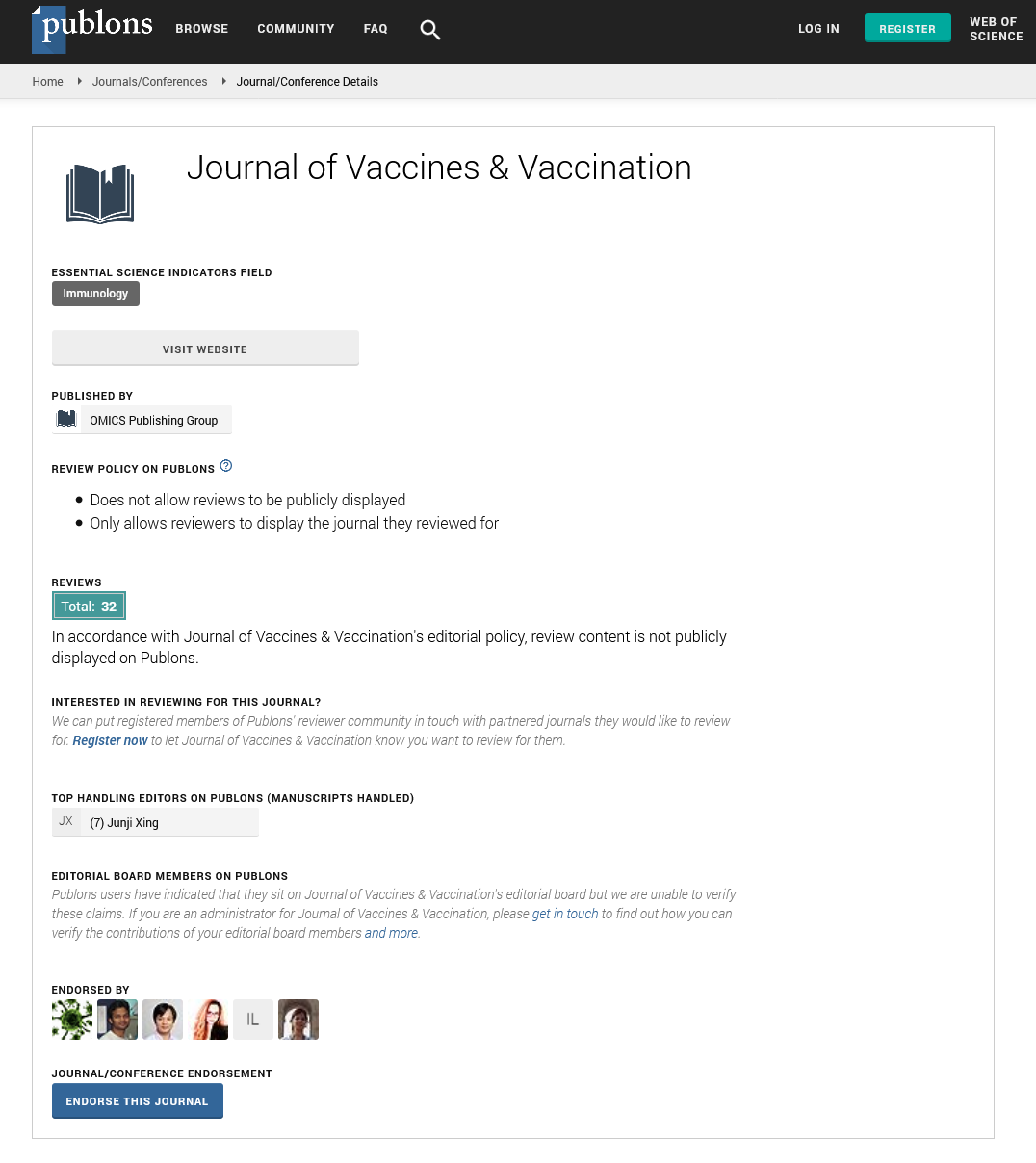Indexed In
- Academic Journals Database
- Open J Gate
- Genamics JournalSeek
- JournalTOCs
- China National Knowledge Infrastructure (CNKI)
- Scimago
- Ulrich's Periodicals Directory
- RefSeek
- Hamdard University
- EBSCO A-Z
- OCLC- WorldCat
- Publons
- MIAR
- University Grants Commission
- Geneva Foundation for Medical Education and Research
- Euro Pub
- Google Scholar
Useful Links
Share This Page
Open Access Journals
- Agri and Aquaculture
- Biochemistry
- Bioinformatics & Systems Biology
- Business & Management
- Chemistry
- Clinical Sciences
- Engineering
- Food & Nutrition
- General Science
- Genetics & Molecular Biology
- Immunology & Microbiology
- Medical Sciences
- Neuroscience & Psychology
- Nursing & Health Care
- Pharmaceutical Sciences
Opinion Article - (2025) Volume 16, Issue 1
Economic Imperative of Protecting Our Elders: A Critical Look at Varicella-Zoster Virus Vaccination Strategies
Chloé M. Lefevre*Received: 01-Jan-2025, Manuscript No. .JVV-25-28829; Editor assigned: 03-Jan-2025, Pre QC No. .JVV-25-28829 (PQ); Reviewed: 17-Jan-2025, QC No. .JVV-25-28829 (Q); Revised: 21-Jan-2025, Manuscript No. .JVV-25-28829 (R); Published: 28-Jan-2025, DOI: 10.35248/2157-7560.22.13.583
Description
The specter of herpes zoster, or shingles, and its often-intractable sequelae, Postherpetic Neuralgia (PHN), looms large over our aging population. As individuals live longer, the risk of VZV reactivation and its debilitating consequences escalates, placing a significant strain on both individual well-being and healthcare systems. While the advent of effective shingles vaccines offers a tangible solution, the optimal strategy for their deployment—particularly from an economic standpoint—remains a subject of considerable debate and necessitates a nuanced, forward-thinking approach.
The fundamental question we must address is not if we should vaccinate our aging population against shingles, but how and to whom we should prioritize these interventions to maximize health benefits while ensuring responsible resource allocation. The availability of two distinct vaccines, each with its own efficacy profile and cost implications, adds layers of complexity to this decision-making process. The recombinant subunit vaccine, with its demonstrably superior and longer-lasting efficacy, presents a compelling argument for widespread adoption. Its ability to significantly reduce the incidence of both shingles and the often-chronic pain of PHN translates directly into averted healthcare costs—fewer physician visits, fewer prescriptions for pain management, and fewer hospitalizations for severe complications. While the initial per-dose cost might be higher and the two-dose regimen adds to the immediate expenditure, a long-term perspective, factoring in the sustained protection and the substantial costs associated with managing shingles and PHN, likely paints a different economic picture.
Conversely, the live-attenuated vaccine, with its lower upfront cost and single-dose administration, might appear more attractive from a purely budgetary standpoint. However, its lower efficacy and potentially shorter duration of protection raise concerns about breakthrough infections and the eventual resurgence of VZV-related disease within the vaccinated cohort. A cost-effectiveness analysis that solely focuses on initial acquisition costs risks overlooking the long-term economic burden associated with potentially higher rates of shingles and PHN in the years following vaccination. The debate over universal versus targeted vaccination strategies also carries significant economic weight. While targeting high-risk subgroups might seem like a more efficient use of resources, accurately identifying these individuals can be challenging and may lead to missed opportunities for prevention in those who don't fit neatly into predefined categories. A universal approach, offering vaccination to all adults above a certain age, simplifies implementation and ensures broader protection, potentially leading to greater overall cost savings in the long run by significantly reducing the overall burden of shingles and PHN in the population.
Furthermore, the economic evaluation must extend beyond direct healthcare costs. The impact of shingles and PHN on an individual's quality of life, functional independence, and ability to participate in social and economic activities is substantial. Lost productivity, the need for informal caregiving, and the psychological toll of chronic pain all contribute to a significant societal burden. A comprehensive cost-effectiveness analysis that incorporates these indirect costs is crucial for fully appreciating the economic benefits of effective vaccination programs. The willingness-to-pay threshold for a QALY gained is a crucial ethical and economic consideration. While assigning a monetary value to health outcomes is inherently complex, it provides a framework for evaluating the relative value of different healthcare interventions. A shingles vaccination strategy that falls within an acceptable WTP range, particularly when considering the long-term disability and reduced quality of life associated with PHN, should be viewed as an economically sound investment in the health and well-being of our aging population.
Ultimately, the decision regarding the optimal VZV vaccination strategy for our aging population should be driven by a holistic economic evaluation that transcends short-term budgetary concerns. We must embrace a long-term perspective, considering the superior efficacy and durability of more effective vaccines, the potential for widespread universal programs to yield greater overall cost savings through significant disease reduction, and the substantial societal burden associated with untreated shingles and PHN. Investing proactively in the health of our elders through robust vaccination programs is not merely a matter of compassion; it is an economic imperative that safeguards both individual well-being and the sustainability of our healthcare systems. Failing to do so risks incurring far greater costs—both human and financial—in the years to come.
Citation: Lefevre CM (2025) Economic Imperative of Protecting Our Elders: A Critical Look at Varicella-Zoster Virus Vaccination Strategies. J Vaccines Vaccin. 13:583
Copyright: © 2025 Lefevre CM. This is an open access article distributed under the terms of the Creative Commons Attribution License, which permits unrestricted use, distribution, and reproduction in any medium, provided the original author and source are credited.

